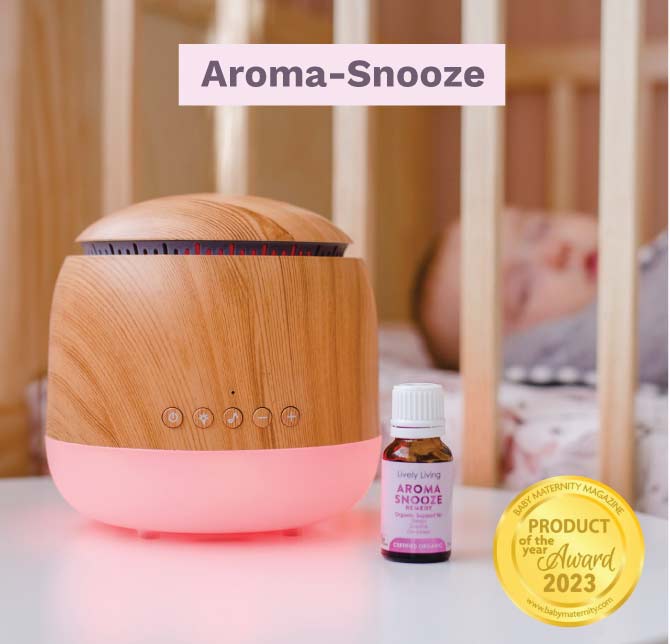Discover the Best Essential Oils for Arthritis Relief
Living with arthritis can bring persistent joint pain and stiffness, significantly impacting daily life. What if a natural approach could help ease those aching joints? Exploring essential oils for arthritis might offer a complementary path to managing discomfort.
These potent plant extracts have a long history in wellness practices, potentially holding benefits for those battling arthritis pain. Their use in aromatherapy practice dates back centuries, focusing on their natural medicinal properties. Could they be a missing piece in your strategy to relieve arthritis symptoms?
If you're exploring ways essential oils might help relieve arthritis, this guide is for you. We will look into specific oils known for potentially soothing arthritis symptoms and enhancing well-being. From well-known options like ginger oil to calming lavender essential oil, we'll discuss how they might fit into your routine.
Table Of Contents:
- Understanding Arthritis and Essential Oils
- Top Essential Oils for Arthritis Relief
- How to Use Essential Oils Safely
- Other Natural Remedies for Arthritis
- When to See a Doctor
- Conclusion
Understanding Arthritis and Essential Oils
Before focusing on individual oils, let's clarify what arthritis involves. Arthritis isn't a single disease but a term covering over 100 conditions affecting the joints, classified under rheumatic diseases. Common types include osteoarthritis, where cartilage breaks down, and autoimmune forms like rheumatoid arthritis and psoriatic arthritis, where the immune system mistakenly attacks the joints.
Millions suffer from arthritis symptoms like joint pain, swelling, stiffness, and reduced range of motion, often impacting areas like the hands, hips, or causing knee osteoarthritis. While conventional treatments involve prescription medications and lifestyle changes, many seek complementary options. This is where essential oils enter the picture as part of an integrative health approach.
Essential oils are concentrated hydrophobic liquids containing volatile chemical compounds from plants. Their specific chemical composition gives each oil its characteristic scent and potential therapeutic benefits. For arthritis sufferers, certain essential oils are valued for their potential anti-inflammatory effects and pain-relieving qualities, offering a way to relieve arthritis symptoms naturally.
How might they provide pain relief? Some essential oils contain compounds believed to possess anti-inflammatory properties, potentially helping to reduce joint swelling and discomfort. Others may work by influencing pain perception or promoting relaxation, which can be beneficial as stress often exacerbates pain associated with chronic health conditions.
It is vital to remember that essential oils are complementary therapies, not replacements for professional medical advice or prescribed treatments. Always consult a healthcare provider for diagnosis and management of arthritis. Information should ideally be medically reviewed for accuracy.
Top Essential Oils for Arthritis Relief
Several essential oils are popular choices for those looking to manage arthritis pain and inflammation. Research, including some clinical trial data and systematic review articles, suggests potential benefits, although more rigorous studies are often needed. Here are some commonly used oils:
1. Ginger Essential Oil
Ginger, known scientifically as Zingiber officinale, is widely recognized for its warming properties and use in traditional medicine. Ginger essential oil contains potent compounds like gingerols and shogaols, which exhibit significant anti-inflammatory properties. Some studies suggest ginger oil may help reduce inflammatory cytokine production, which plays a role in conditions like rheumatoid arthritis and induced arthritis models in research.
Using ginger essential oil might help lessen joint pain and stiffness associated with various forms of arthritis. A common application method is diluting a few drops of ginger oil with a carrier oil, such as coconut or almond oil, and gently massaging it into the affected areas. Adding ginger essential oil to a warm bath can also provide soothing relief.
Consider its potent nature; always dilute properly to avoid skin irritation. The distinct, spicy aroma can also be invigorating when diffused.
2. Frankincense Essential Oil
Frankincense, derived from the resin of Boswellia trees, has been valued for millennia for its purported health benefits. Research indicates that compounds in frankincense, particularly boswellic acids, may possess strong anti-inflammatory effects. These effects could potentially help reduce inflammation pathways active in arthritis and may even play a role in protecting cartilage.
This essential oil is also known for its grounding, earthy aroma, often used in aromatherapy practice to promote relaxation and reduce stress. Managing stress is crucial, as it can worsen arthritis symptoms. Many find its scent helps calm the mind, contributing indirectly to pain relief.
You can diffuse frankincense oil using an essential oil diffuser, add a few drops to unscented lotion for topical application, or combine it with a carrier oil for massage. As with all oils, perform a patch test first.
3. Lavender Essential Oil
Lavender essential oil is perhaps one of the most well-known essential oils, celebrated for its calming and relaxing scent. Its benefits extend beyond stress relief; lavender essential possesses both analgesic (pain-relieving) and anti-inflammatory properties. This makes lavender essential oil a popular choice for managing various types of pain, including arthritis joint pain and even headache pain.
Studies suggest that inhaling lavender can positively impact mental health and reduce anxiety, which is beneficial for those dealing with chronic pain conditions. Using lavender oil before sleep may improve sleep quality, crucial for recovery and pain management. Some blends for relaxation or bath salts specifically included lavender for its soothing effects.
Enjoy lavender oil by adding it to an oil diffuser, mixing it into a warm bath (perhaps with Epsom salts), or applying it topically after diluting it with a carrier oil. An aromatherapy massage using diluted lavender essential oil can be particularly beneficial for easing muscle tension around affected joints.
4. Eucalyptus Essential Oil
Eucalyptus oil, derived from the leaves of the eucalyptus tree, is noted for its powerful, penetrating aroma and cooling sensation upon application. This cooling effect can provide temporary relief from muscle and joint pain. Cineole, a major component of eucalyptus oil, is recognized for its anti-inflammatory and analgesic properties.
Its potential to reduce swelling and pain makes it a common ingredient in over-the-counter rubs for arthritis. The invigorating scent can also help clear the sinuses and promote feelings of easier breathing. Caution is needed, as eucalyptus oil is potent and should be well diluted.
Mix a few drops with a carrier oil before massaging onto sore joints. Alternatively, add a drop or two to a warm compress applied to the painful area. Avoid using it near the face of young children.
5. Peppermint Essential Oil
Similar to eucalyptus, peppermint oil delivers a cooling sensation due to its high menthol content, which can help distract from arthritis pain. Menthol acts as a counter-irritant, creating a cooling feeling that can temporarily numb discomfort. Peppermint oil also exhibits anti-inflammatory and antispasmodic properties.
The bright, refreshing scent of peppermint is often found to be uplifting and may help combat fatigue often associated with chronic conditions. Some find it helpful for focus and easing tension headaches as well. Like eucalyptus, it is strong and requires proper dilution.
Dilute peppermint oil with a carrier oil before applying to painful joints. A few drops added to a cool compress can offer refreshing relief, especially during flare-ups.
6. Basil Oil
Basil oil, particularly sweet basil (Ocimum basilicum), contains compounds like linalool, which has shown anti-inflammatory and pain-relieving potential in some studies. Its fresh, herbaceous scent is often used in aromatherapy to uplift mood and sharpen focus. Basil oil might offer complementary benefits for managing arthritis symptoms.
When using basil oil topically, dilution with a carrier oil is essential. It can be incorporated into massage blends or diffused to enjoy its aromatic properties. As with other potent oils, conduct a patch test before wider application.
7. Turmeric Essential Oil
Turmeric essential oil contains turmerone and ar-turmerone, which are related to curcumin, the active compound in turmeric spice known for its powerful anti-inflammatory effects. This oil may help reduce inflammation and oxidative stress associated with arthritis. Its warm, earthy scent can be grounding.
Dilute turmeric oil well with a carrier oil before applying to the skin, as it can potentially stain fabric and skin. It can be blended with other oils like ginger or frankincense for enhanced effect. Due to its potency, start with a low concentration.
This table summarizes some popular essential oils for arthritis:
| Essential Oil | Potential Benefits for Arthritis | Common Uses |
|---|---|---|
| Ginger Essential Oil (Zingiber officinale) | Anti-inflammatory, pain relief, warming sensation. | Massage (diluted), warm bath, diffusion. |
| Frankincense Essential Oil | Anti-inflammatory, potential cartilage protection, calming aroma. | Massage (diluted), diffusion, added to lotion. |
| Lavender Essential Oil (lavender essential) | Anti-inflammatory, pain relief, relaxation, stress reduction, improved sleep. | Diffusion, massage (diluted), bath salts, warm bath, cotton ball application. |
| Eucalyptus Essential Oil | Anti-inflammatory, pain relief, cooling sensation. | Massage (diluted), warm compress. |
| Peppermint Essential Oil | Pain relief (cooling/numbing), anti-inflammatory, energizing aroma. | Massage (diluted), cool compress. |
| Basil Oil | Potential anti-inflammatory and pain relief, uplifting scent. | Massage (diluted), diffusion. |
| Turmeric Essential Oil | Strong anti-inflammatory effects, antioxidant properties. | Massage (well-diluted), blended with other oils. |
How to Use Essential Oils Safely
While exploring essential oils for arthritis pain relief, safety is paramount. These highly concentrated substances must be used correctly to avoid adverse reactions. Remember that even natural products can cause irritation or interact with other health conditions or treatments.
Here are key safety guidelines:
- Dilute Before Topical Use: Never apply undiluted essential oils directly to the skin. Always dilute them with a carrier oil like coconut, jojoba, almond, or olive oil. A general guideline is 1-2 drops of essential oil per teaspoon (5ml) of carrier oil for sensitive skin or daily use, and potentially 3-5 drops per teaspoon for targeted, short-term application, but always start low.
- Perform a Patch Test: Before applying a new essential oil blend more widely, test a small amount on an inconspicuous area of skin (like the inner forearm). Wait 24-48 hours to check for any redness, itching, or irritation.
- Avoid Ingestion: Do not ingest essential oils unless specifically advised and supervised by a healthcare professional trained in internal use. Many oils are toxic if swallowed.
- Keep Away from Sensitive Areas: Avoid contact with eyes, inner ears, mucous membranes, and broken or damaged skin. If accidental contact occurs, flush with a carrier oil (not water) and seek medical advice if irritation persists. Improving eye health involves different strategies, not essential oils near the eyes.
- Consider Health Conditions: If you are pregnant, breastfeeding, have sensitive skin, epilepsy, high or low blood pressure, or other significant health conditions (like multiple sclerosis, breast cancer, or ulcerative colitis), consult your doctor or a qualified aromatherapist before using essential oils. Certain oils may be contraindicated or require specific precautions; careful monitoring of blood pressure readings might be necessary with some oils.
- Use an Oil Diffuser Correctly: When using an essential oil diffuser, follow the manufacturer's instructions. Diffuse in well-ventilated areas and take breaks; continuous diffusion isn't necessary or always recommended. Consider pets and children, as some oils can be harmful to them when inhaled.
- Storage: Store essential oils in dark glass bottles, away from heat and direct sunlight, and out of reach of children and pets. Check expiration dates, as older oils can oxidize and increase the risk of skin sensitization.
- Quality Matters: Choose high-quality, 100% pure essential oils from reputable brands. Purity and chemical composition can vary, affecting both effectiveness and safety.
Be wary of information found solely on social media; seek out medically reviewed sources or professional advice. Understanding safe aromatherapy practice enhances the potential benefits while minimizing risks.
Other Natural Remedies for Arthritis
Essential oils can be a beneficial part of a multi-faceted approach to managing arthritis. Combining them with other natural strategies can often lead to better overall results in managing arthritis symptoms. Consider these complementary approaches:
- Regular Gentle Exercise: Engaging in low-impact activities helps maintain joint flexibility, strengthen supporting muscles, and reduce pain. Options like swimming, water aerobics, cycling, tai chi, and yoga are often recommended for people with various rheumatic diseases. Movement can also support weight management.
- Anti-Inflammatory Diet: Nutrition plays a role in managing inflammation. Focus on whole foods like fruits, vegetables, whole grains, legumes, nuts, seeds, and fatty fish rich in omega-3 fatty acids. Limiting processed foods, sugary drinks, red meat, and saturated fats may help reduce levels of inflammation.
- Weight Management: Maintaining a healthy weight reduces stress on weight-bearing joints like the hips and knees, which is particularly important for knee osteoarthritis. Even modest weight loss can significantly decrease pain and improve function. Consult a professional if you need help to lose weight safely.
- Heat and Cold Therapy: Applying heat (like a warm bath, heating pad) can relax muscles and ease stiffness. Cold therapy (ice packs, cool compresses) can help numb pain and reduce swelling, especially after activity or during flare-ups. Alternating between them can sometimes be effective.
- Stress Reduction Techniques: Chronic pain often increases stress, which in turn can worsen pain perception and inflammation. Practices like mindfulness, meditation, deep breathing exercises, and spending time in nature can support mental health. Some studies, like a University Medical Center study involving scents like vanilla and green apple, suggest pleasant aromas can reduce stress; similarly, results from a Columbia University Medical Center study indicated calming activities helped participants maintain stable heart rates while completing stress tests.
- Supplements: Some individuals find relief with supplements like glucosamine, chondroitin, omega-3 fatty acids, or turmeric/curcumin capsules. However, evidence is mixed, and quality varies. Discuss supplements with your doctor before starting, as they can interact with prescription medications.
- Acupuncture and Massage: Acupuncture, a traditional Chinese medicine technique, involves inserting thin needles into specific points on the body and may help relieve arthritis pain for some. Therapeutic massage, including aromatherapy massage, can help reduce muscle tension, improve circulation, and promote relaxation.
- Integrative Health Approaches: Working with practitioners who specialize in integrative health can help you combine conventional medical treatments with evidence-informed complementary therapies safely and effectively. This approach considers the whole person—body, mind, and spirit.
Remember that managing arthritis is often a long-term process. Finding the right combination of therapies may take time and experimentation, guided by your healthcare team. These approaches can support overall well-being, impacting men's health and women's health positively beyond just joint pain.
When to See a Doctor
While essential oils and natural remedies can offer valuable support to relieve arthritis symptoms, they should complement, not replace, conventional medical care. Consulting a healthcare professional is crucial for an accurate diagnosis and appropriate treatment plan. Arthritis encompasses many conditions, and proper identification is necessary for effective management.
See your doctor or visit a medical center if you experience:
- Persistent or worsening joint pain, stiffness, or swelling.
- Sudden onset of severe joint pain.
- Joints that are red, warm to the touch, or significantly swollen.
- Difficulty performing daily activities due to joint issues.
- Unexplained fatigue, fever, or weight loss accompanying joint symptoms.
Your primary care physician may refer you to a rheumatologist, a specialist in arthritis and rheumatic diseases. Reputable institutions like the Mayo Clinic or a university medical center, such as Columbia University Medical Center, often have specialized departments. They can provide medically reviewed information and treatment options based on the latest research.
Discuss your interest in using essential oils or any complementary therapies with your doctor. They can advise on potential interactions with your current health conditions or prescription medications and help you integrate these practices safely into your overall care plan. They can also guide you away from potentially harmful misinformation sometimes found online or via social media and help you find reliable resources, perhaps even suggesting a pill identifier tool if managing multiple medications.
Conclusion
Using essential oils for arthritis can be a helpful component in managing joint pain and inflammation. Oils like ginger essential oil, known for its warming anti-inflammatory properties derived from Zingiber officinale, and the calming lavender essential oil offer potential natural relief. Incorporating these into aromatherapy massage or a warm bath may help soothe discomfort and improve overall well-being.
Remember the importance of safe usage: always dilute essential oils with a carrier oil, perform patch tests, and consult healthcare providers, especially if you have other health conditions or take prescription medications. Combining essential oils with other strategies like gentle exercise, weight management, and stress reduction techniques builds a more comprehensive approach to relieve arthritis symptoms and support your mental health.
Living with arthritis requires proactive management, but exploring natural options like essential oils, guided by reliable information and professional advice from sources like a university medical center or medically reviewed articles, can empower you. By carefully integrating these aromatic tools, you may find increased comfort and an improved quality of life, embracing nature's potential one drop at a time.














